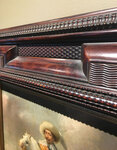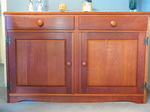We may receive a commission when you use our affiliate links. However, this does not impact our recommendations.
Last week, the woodshop across the street from mine caught on fire. Luckily, no one was hurt, the firemen arrived quickly and the damage wasn’t too bad – they’ll be back at work in a week.
But the dramatic event did make me review the situation in my shop to see if things could be improved. As always, things can always be improved.
For most of my woodworking life, I have worked in commercial or industrial workshops where fire and safety inspections are routine (yes, Popular Woodworking was classified as a commercial shop and had to follow all the rules).
So when I set up shop in Covington, Ky., I had a pretty good grasp of how to do it correctly. I have active heat and smoke detection that is linked to my alarm with redundant cellular backups. I replaced all the sketchy wiring in the building. I have commercial fire extinguishers in every room (though they aren’t required). Plus lighted exit signs with battery backup (also not required by the city). Oh, and all the equipment designed to generate flame is stored in a cinderblock outbuilding.
But after seeing the smoke across the street, I knew there was more I could do.
Today I purchased a cabinet designed to protect flammable materials. For the last five years, I’ve been reducing the flammable finishing materials that I use. I’m done with lacquer and lacquer thinner. And I am done with acetone and NAPTHA.
But I still use shellac, which requires alcohol. And most waxes have flammable solvents. And I have MAPP gas on the premises. So a protective cabinet is a good idea.
Most fireproof cabinets start at $370 for a small one that is sized for home use. I wanted something bigger and more industrial – like what we used at the door factory. A quick search on Craigslist turned up a bunch of used ones that were being decommissioned by factories. I picked up the one shown here for $300. It’s big enough to live in (36” x 36” x 65”) in a pinch.

Note that this is BEFORE we loaded the cabinet up with solvents and flammable gasses. So don’t bother commenting on the gas cannisters above the cabinet.
I placed it in the cinderblock outbuilding. That way if there is a fire that involves my machines or solvents, most likely I’ll lose the roof and not the rest of my workshop (and home above).
I’m sure some of you will call me paranoid for these steps (and the rest of you will suggest 20 other things I can do – please don’t bother because I have passed my fire inspections). But seeing a neighboring shop catch fire is sobering.
— Christopher Schwarz
Here are some supplies and tools we find essential in our everyday work around the shop. We may receive a commission from sales referred by our links; however, we have carefully selected these products for their usefulness and quality.













